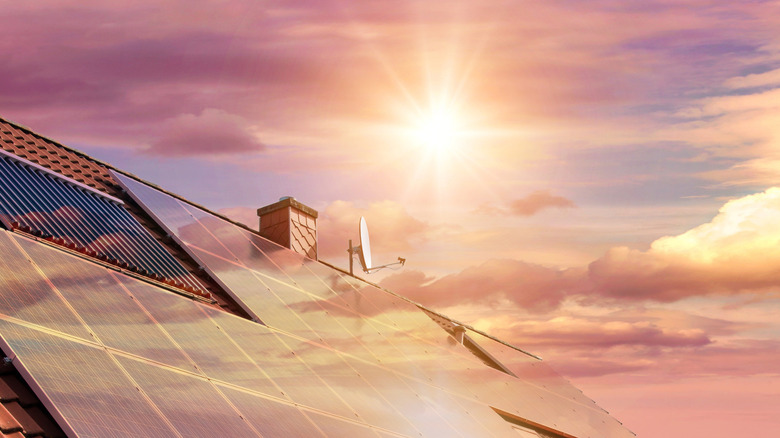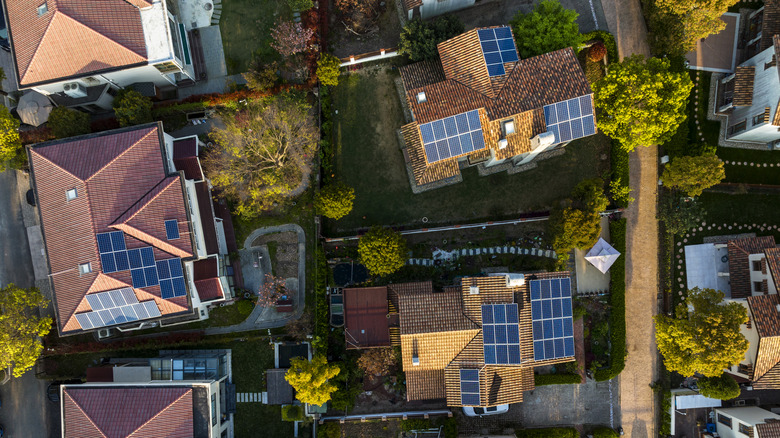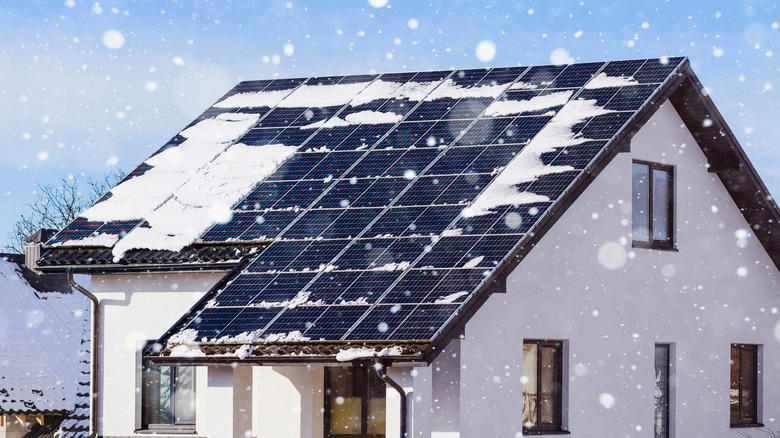What Is The Ideal Temperature Range For Solar Panels & Can They Get Too Hot?
Switching a home to solar power (or, at least, installing solar panels to help offset some of your grid usage) can be a worthwhile endeavor. It can also be kind of a headache, with several common myths to dispel, a number of pros and cons that you'll need to weigh, and several types of consumer panels and companies to choose from.
On top of all of that, you do indeed also need to think about the heat. Like most other electronic devices, solar panels are affected by prolonged exposure to high temperatures. They generally won't heat up to the point of becoming a danger – their surfaces can and do reach up to 149 degrees Fahrenheit — but getting too warm does still create a problem. Similar to how humans tend to have a more difficult time doing physical activity when it's really hot, solar panels aren't able to output as much energy, to the tune of an energy loss of 1%, 5%, and so on, as temperatures rise above a panel's ideal range.
The best temps
The baseline temperature for a solar panel is 77 degrees Fahrenheit or 25 degrees Celsius. It's the temperature at which consumer-grade panels are tested (to determine their temperature coefficient), and for all intents and purposes, is the industry standard performance cutoff.
What you want to look for when choosing your solar panels is a number that looks like a negative percentage in degrees Celsius (for example, "-0.40% C"). This temperature coefficient is a quick look at roughly how much of a percentage in energy production you can expect to lose for every degree above that 77 degrees Fahrenheit/25 degrees Celsius ceiling. In other words, a coefficient of -0.50% C means that every degree above 25 C will lose half a percent — so at 35 C (95 F), the panel would lose a full 5% of its effectiveness.
Colder climates don't really pose this kind of problem for solar panels. In fact, it's the opposite, because as long as the panels aren't being blocked by snow, their efficiency actually gets a boost.
Getting around the problem
Other than living somewhere with a cooler overall climate, there isn't a whole lot you can do on your own to prevent a temperature-based drop in efficiency. Solar panels are designed to sit in the sun, so they can physically handle the heat, and panels are typically installed an inch or two above the actual roof to allow for a bit of airflow and reduce heat buildup.
What you can do is plan for it. If you know your location tends to get pretty warm, or expect that average temperatures in your area will rise above 77 degrees as time goes on, pay attention to the temperature coefficients of the panels you're thinking of having installed. If it fits your solar energy plans and your budget, go for the panels with the least amount of dropoff (ex, "-0.24 C" instead of "-0.30 C").
Also, remember that different models of solar panels from different companies can have their own coefficients. So if one source has too much of a dip in efficiency for your liking, try shopping around a bit more.


